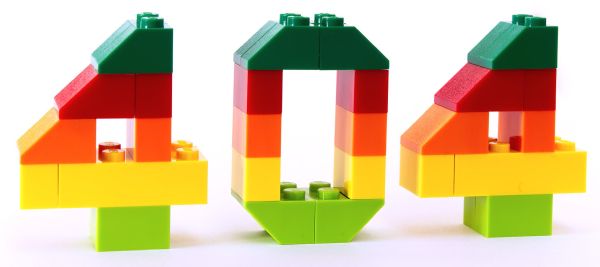
When it looks like the internet is dead, there are some basic troubleshooting steps you can take to see if you’ve really broken it. (And so far, the answer has been ‘no’.)
Reboot First. And Then Take a Step Back
I know that most of you live in Outlook. Or maybe QuickBooks. So separating the outside world (“internet”) from your computers and networks is, well, fuzzy. Badly defined. Vague-ish. But Outlook is a horrible test of whether or not the internet is up. Testing the internet with Outlook is like saying that if your car can’t move, Interstate 95 is a parking lot. It’s sometimes true, but not really useful for troubleshooting traffic.
So if Outlook stops working, first check if you can reach a popular web page, basically a site that never goes down. Open a browser and see if you can get to Amazon.com or CNN.com.
No, not Google.com, because Google’s plain white website is so clean and empty that you can’t tell if you’re looking at Google, or at your computer’s memory of Google, what it calls the ‘cache’. (More on error messages below.)
Is it Down, or Just You?
So if the web page works, and your mail does not, what does that mean? Well, it’s either Outlook (got a bad update, got a bad third-party add-in, got muddled), or your mail server, or the connection in-between. It’s too complex a topic to cover in detail here, but the quick check is to test the web page that matches your email address. If you can reach that, it’s probably an Outlook problem.
For example, if mail isn’t working, and your address is admin@yourdomain.com, check that the web page yourdomain.com is up and working. If it’s up, probably an Outlook issue. If it’s down, your next step is to see if the site is down for the rest of the world, or you have some local issue. You do that on this website:
https://DownForEveryoneOrJustMe.com/
It works just like it sounds. Enter a web page address, and it will tell you if it can see the page, or if it’s just you.
Big Site Down?
If you are trying to reach a popular site, and it looks down, you can test that, too. If Facebook goes down, or Verizon, AOL, Comcast, or a few hundred other popular sites, check it here:
https://DownDetector.com/
The pages are sorted on DownDetector by the number of people checking to see if a page is down, so the with the most reported errors are at the top. Use the search box to look for other sites. Click the site logo to see details; there is a complaint list, newest-first, and an outage map. Frequently, DownDetector will show a regional outage faster than AmericaOnline or Comcast will update their outage pages.
Error Message Numbers

The internet has error numbers. They tell your browser anything that isn’t an actual web page. If you try to visit a page, and it replies to your browser with a 404, that means something.
- 404 Not Found (Check your sppellin’)
- 301 Moved Permanently (and here’s where it went. Google, re-index this.)
- 302 Moved Temporarily (Be right back. ‘till then, look here.)
- 403 Forbidden (Sure you shouldn’t have a login for that page?)
- 500 Server Error (This web server has gone stupid. It’s not you, it’s me.)
These are not totally reliable. If a web page editor changes the name of a page, and you go to the old address, you will see either a 404 (Not found), left no forwarding address, or a 301 (Moved Permanently), change of address to this trendy new place. It takes a human to file that change of address, er, I mean to add the 301 to a list of forwarded addresses.
There are more, many more errors, mostly of no use to end users. They’re handy for computers talking to each other, and it’s not just web pages, but can include other internet communication:
- 407 Proxy required
- 408 Request Timeout (slow internet or overloaded web site)
- 200 OK
And then there’s this one:
- 418 I’m a Teapot
That’s what happens when you tell an internet-connected teapot to brew coffee. OK, it was an April Fool’s gag in 1998, and it got stuck. It’s now an officially-accepted reminder that the internet was designed by humans, with all that implies. More here:
https://en.wikipedia.org/wiki/Hyper_Text_Coffee_Pot_Control_Protocol